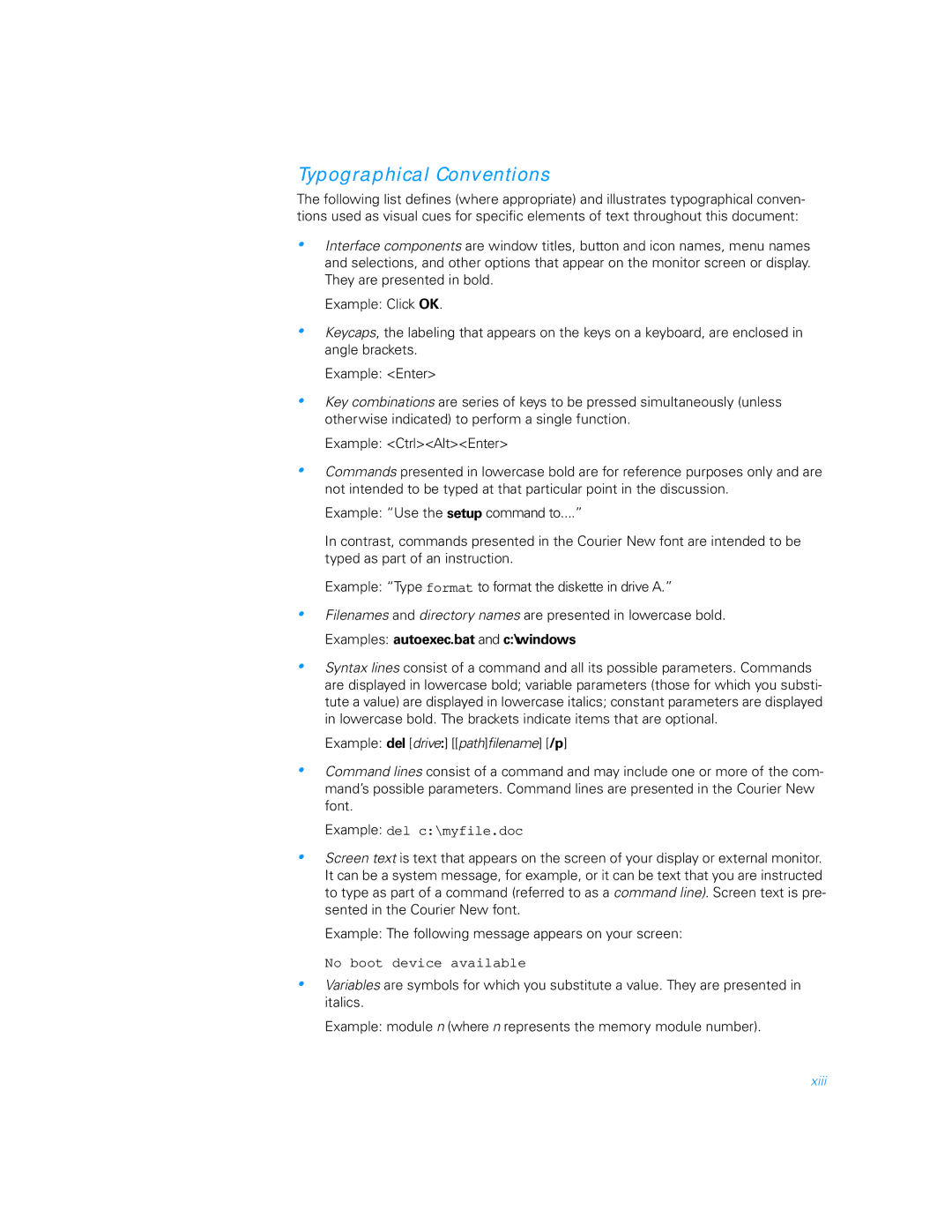Typographical Conventions
The following list defines (where appropriate) and illustrates typographical conven- tions used as visual cues for specific elements of text throughout this document:
•
•
•
•
•
•
•
•
•
Interface components are window titles, button and icon names, menu names and selections, and other options that appear on the monitor screen or display. They are presented in bold.
Example: Click OK.
Keycaps, the labeling that appears on the keys on a keyboard, are enclosed in angle brackets.
Example: <Enter>
Key combinations are series of keys to be pressed simultaneously (unless otherwise indicated) to perform a single function.
Example: <Ctrl><Alt><Enter>
Commands presented in lowercase bold are for reference purposes only and are not intended to be typed at that particular point in the discussion.
Example: “Use the setup command to....”
In contrast, commands presented in the Courier New font are intended to be typed as part of an instruction.
Example: “Type format to format the diskette in drive A.”
Filenames and directory names are presented in lowercase bold.
Examples: autoexec.bat and c:\windows
Syntax lines consist of a command and all its possible parameters. Commands are displayed in lowercase bold; variable parameters (those for which you substi- tute a value) are displayed in lowercase italics; constant parameters are displayed in lowercase bold. The brackets indicate items that are optional.
Example: del [drive:] [[path]filename] [/p]
Command lines consist of a command and may include one or more of the com- mand’s possible parameters. Command lines are presented in the Courier New font.
Example: del c:\myfile.doc
Screen text is text that appears on the screen of your display or external monitor. It can be a system message, for example, or it can be text that you are instructed to type as part of a command (referred to as a command line). Screen text is pre- sented in the Courier New font.
Example: The following message appears on your screen:
No boot device available
Variables are symbols for which you substitute a value. They are presented in italics.
Example: module n (where n represents the memory module number).
xiii
